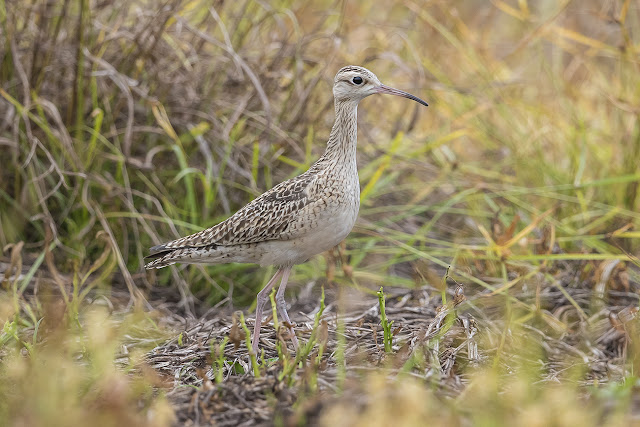We are just past mid-way point of Spring Migration, giving us a new sets of migrants. Other than the regular migrants, I received a nice surprise one day at Tai Mei Tuk Catchment in form of an adult female Barred Cuckoo Dove, a rare species in Hong Kong recorded sporadically. This species is widespread in mainland China, I have seen them many times in places like Jiangxi. I found the bird by pure luck, as I must have startled it while it was feeding on a fruiting tree, it flew up and perched on an open branch for around 10 seconds before it flew off, just enough time for me to get a photo! They are a stunning looking species and I do hope they can establish a resident population in Hong Kong someday.
Barred Cuckoo Dove - a brief encounter
The fruiting tree was later identified as Syzygium levinei, a species belonging to the family Myrtaceae, the fruit is obviously attracts a lot of birds as few dozens of Eyebrowed Thrushes, Japanese Thrushes and a single Brown-headed Thrush continues to be recorded here, although none of them really photographable.
Syzygium levinei
Other good birds at the catchment includes Oriental Cuckoos, I believe there were more than one individual, one of which decided to let me take a few photographs. Like all cuckoos, they are usually very shy, so I was very glad this one allowed some good looks before disappearing again up the slope.
Oriental Cuckoo
Another species passing through in great numbers at the moment is the Chinese Sparrowhawk, or as most birders in Hong Kong known as the Chinese Goshawk. This attractive little accipter can be quite approachable sometimes, especially those that just landed, a few of these showed well along the catchment, while many more flew overhead. This species is highly migratory, where some winter as far south as Java and migrate all the way back to China or Korea to breed. This species is sexually dimorphic, males have completely dark eyes while females have yellow eyes, both equally attractive.
Chinese Goshawk - male
Chinese Goshawk - female
I also enjoyed prolonged views of a Crested Goshawk the other day, a common species that I can never get bored of. This species is fairly adaptive and can be found in all sorts of habitats, including urban parks.
Crested Goshawk
Two species of Flowerpeckers have been seen along the catchment, including the very common but beautiful Scarlet-backed Flowerpecker, which I managed a good photo of a male the other day. The other one is the drab looking but scarce Plain Flowerpecker. Flowerpeckers are best detected by their 'tic-tic-tic' calls, but these contact calls are difficult to identify down to species, their songs however are quite distinct and is useful for identification if you don't get a good view.
Scarlet-backed Flowerpecker - male
Plain Flowerpecker
With the Ashy Minivets now gone, only Scarlet and Grey-chinned Minivets remains, both species should be breeding right about now. I also explored the Tai Mei Tuk Family Walk recently, where I found a pair of Orange-headed Thrush, a scarce resident that I hope maybe breeding in the area.
Scarlet Minivet - female
Orange-headed Thrush - female
The peak for most flycatchers ends around late April, Narcissus or Blue-and-White Flycatchers are replaced by dozens of Grey-streaked Flycatchers, I had over 7 birds in just one tree! Hainan Blue Flycatchers remain vocal and abundant, although I have yet seen any breeding pairs in the area.
Grey-streaked Flycatcher
Hainan Blue Flycatcher - male
The first brood of Collared Crow may have already fledged as I saw a juvenile bird the other day, although I couldn't get a photo of it, but I see them along the catchment quite often, I suspect they make their nests further up the slope. Grey Treepies are abundant here as always, for some reason this species is often very shy in Hong Kong, even though they are common along the catchment I don't get to see them everytime, and I am always happy if I manage a decent photo.
Collared Crow
Grey Treepie















































































